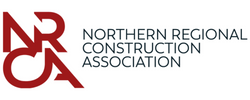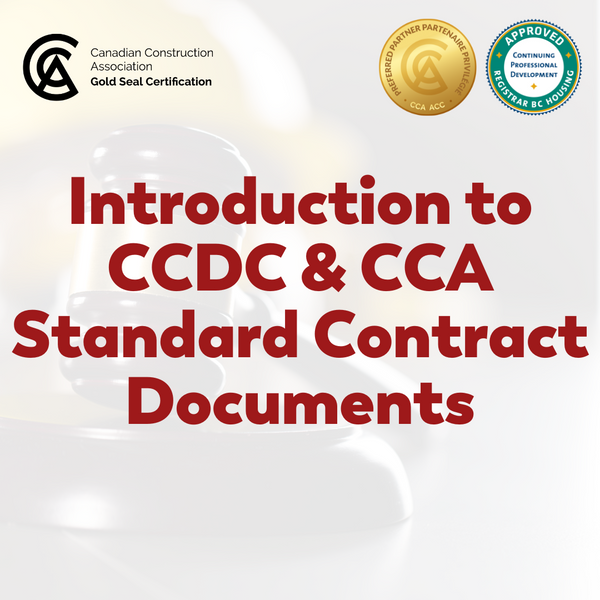Product Overview
Contracting industries in Canada benefit greatly from having access to standardized contract forms and other documents which assist us in creating agreements with clients and to manage those agreements. Along with the Canadian Construction Association, the Canadian Construction Documents Committee create, revise and update numerous documents used by contractors and project owners across Canada.
Understanding what each document does and how it works is the key to creating appropriate and clearly written agreements and managing certain project obligations.
Between the CCDC and the CCA there are some 48 standard documents, forms and guides available to the industry. The most commonly used of these include documents to create contractual agreements of various types and manage project requirements. Stipulated price agreements, unit price agreements, cost plus fee agreements, construction management agreements and design-build agreements are among the most commonly used documents. Forms like statutory declarations required by the contract documents as well as forms for pre-qualification are also available. The CCA specifically handles documents affecting the contractor to sub-contractor relationships while the CCDC documents typically handle contractor to owner relationships.
Contracts Covered:
- CCA 1
- CCDC 1
- CCDC 2
- CCDC 3
- CCDC 4
- CCDC 5a & b
- CCDC 9a & b
- CCDC 11
- CCDC 14
- CCDC 30
Learning Outcomes
By the end of this course you will be able to:
- Differentiate the Contract and the Contract Documents
- Differentiate primary & secondary rights & obligations created by CCA/CCDC forms
- List and discuss the legal requirements of an assignment of rights and obligations
- List and differentiate three main structural components of CCA/CCDC contract forms
- Recognise the common CCA/CCDC contract forms by name and number
- Define the parties to the contracts by name and role
- Differentiate the common construction contract arrangements
- Discuss the primary differences in risk allocation offered by each arrangement
- Differentiate between the prime contract and subordinate contracts
- Discuss how standard subcontract forms can help to create clear project hierarchy and help contractors meet the terms and conditions set out in the prime contract
Who should attend?
All construction industry stakeholders need to be aware of the various standard forms used by the industry and should understand how they work – especially before entering into contractual agreements based on them
Industry Credits
- This course is approved for 3 Gold Seal Credits
- This course is worth 6 Informal Continuing Professional Development (CPD) credits as approved by BC Housing.
Course Format
- Live, Online, Instructor-led training. This is a highly interactive course facilitated by the instructor on a video platform.
- You will be expected to have your webcam on during the whole class and participate in break-out rooms, small-group discussions, and other activities with your instructor and classmates during the course.
- Course access information will be provided to you in advance of the training by your instructor
- Full attendance and participation in all sessions is mandatory for course completion. If a student misses a class session, we are unable to transfer registration or provide a partial refund of the registration fees.
Course Requirements (Technology & Participation)
This course requires full face-to-face interaction and participation from both the instructor and students. In order to attend, you’ll must make sure you have the following:
- Computer or laptop with webcam (webcams are mandatory): This course will involve 100% on-screen interaction with your instructor and classmates, reading/viewing on-screen content like slides or videos, and interacting via typing with questions or responses. For this reason, you must have a webcam and use a full computer/laptop, and we do not permit students to attend using a tablet or cell phone.
- A quiet space with minimal distractions: Please plan to be fully engaged in the class, and clear your work schedule just as you would for attendance in an in-class program.
Refunds or Transfers:
- Five (5) or more business days before the course start date: Full refund of registration fees or can be transfers to a different course date.
- Less than five (5) business days before the course start date and course no-shows: No refunds or transfers to future course dates.
- For a complete document on the NRCA Education Policies, click here.
Other Policies
- Substitution of another member of your company/team is permitted up to the course start date for no additional fee.
- Unless otherwise stated, every person able to see, hear, and observe the virtual course sessions must be a paid participant. Non-compliance of this requirement will result in removal from the course. Refunds will not be issued to students who are removed from the course for non-compliance of this requirement.
- If the NRCA has to postpone or cancel courses due to insufficient enrolment, NRCA will refund the registration fee or, if possible, the attendee may choose to move to an identical session in the future.







